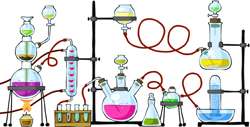Step by step toward more efficient chemical synthesis

Chemical engineering conventionally divides the process from raw materials to finished product into unit operations. EU-funded researchers developed software tools to evaluate integration of two or more units for optimisation of chemical synthesis in a broad range of applications.
Unit operations include such activities as separation, purification, mixing and reaction processes. More modern methodologies strive to integrate two or more steps into multifunctional units to improve product quality and yield while decreasing energy consumption, waste, environmental impact and capital investment.
The overall chemical conversion process of chemical reaction and separation to obtain desired products and recyclation of waste materials (reaction and separation) is an active area of research with the goal of exploiting synergies for process design and optimisation. Combining separation and reaction in one continuous reactor concept has the potential to greatly increase speed and efficiency of the conversion process.
Development of generic integration software tools for a range of alternative processes related to the chemical, pharmaceutical and electronics industries was the motivation behind the ‘Integrating separation and reaction technologies’ (Insert) project.
European scientists conducted both theoretical and experimental work, with the latter designed to provide the necessary data for model development and validation.
In addition to identification of computer hardware/software and numerous chemical test systems, investigators developed measures of environmental impact, cost effectiveness and safety.
Pilot plants were set up and six different chemical systems and alternatives were investigated. Reactions were integrated with separation techniques including distillation, adsorption, membrane filtration and the use of dividing wall columns.
Overall, the Insert consortium successfully designed, modelled and analysed promising multi-unit processing equipment including both new technologies and emerging ones.
The database formed the basis of generic computer-aided process engineering tools that promise to advance the state of the art in multi-unit chemical processing for optimisation of reaction-separation sequences in many related chemical fields.
Provided by CORDIS

















